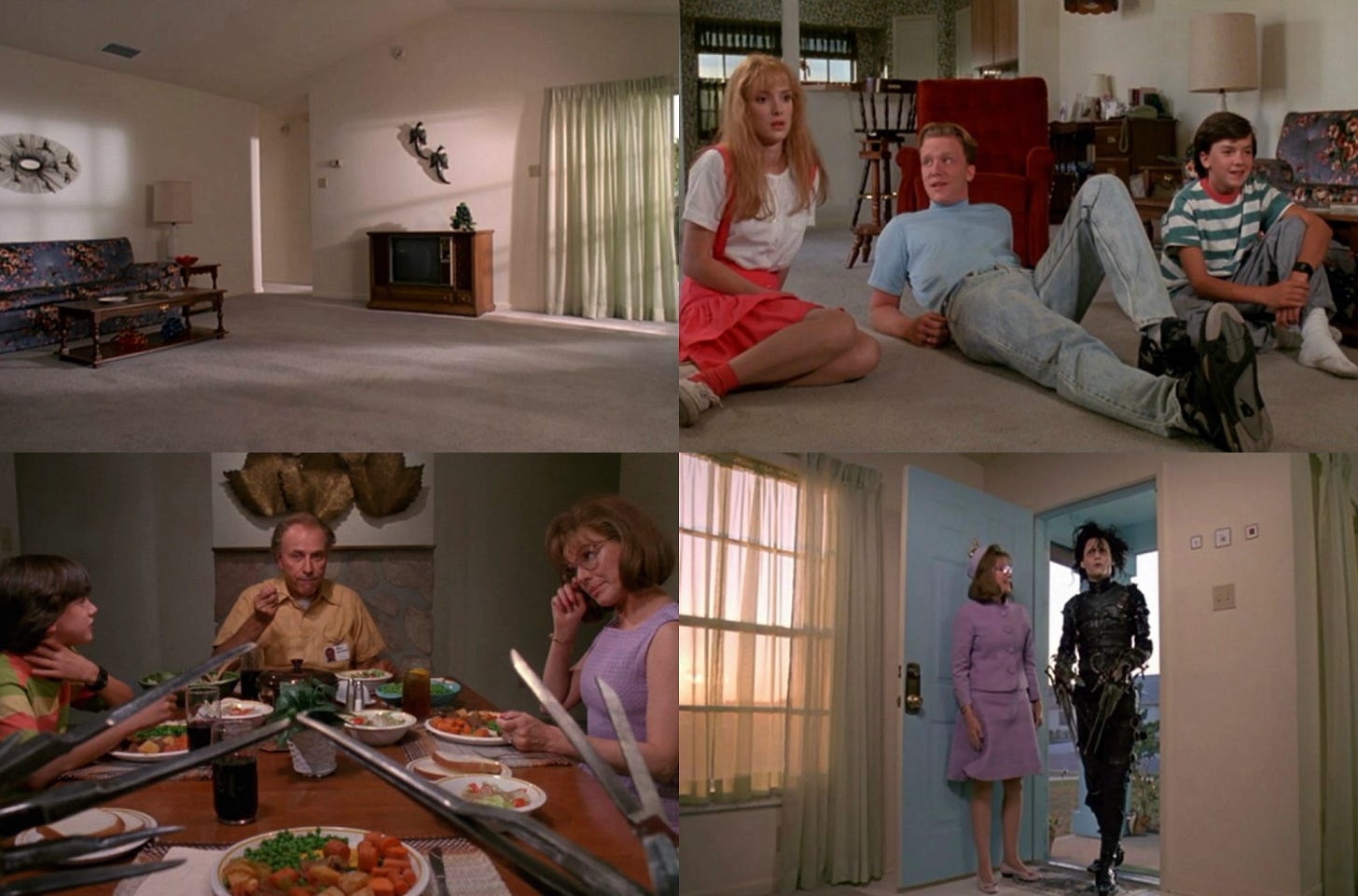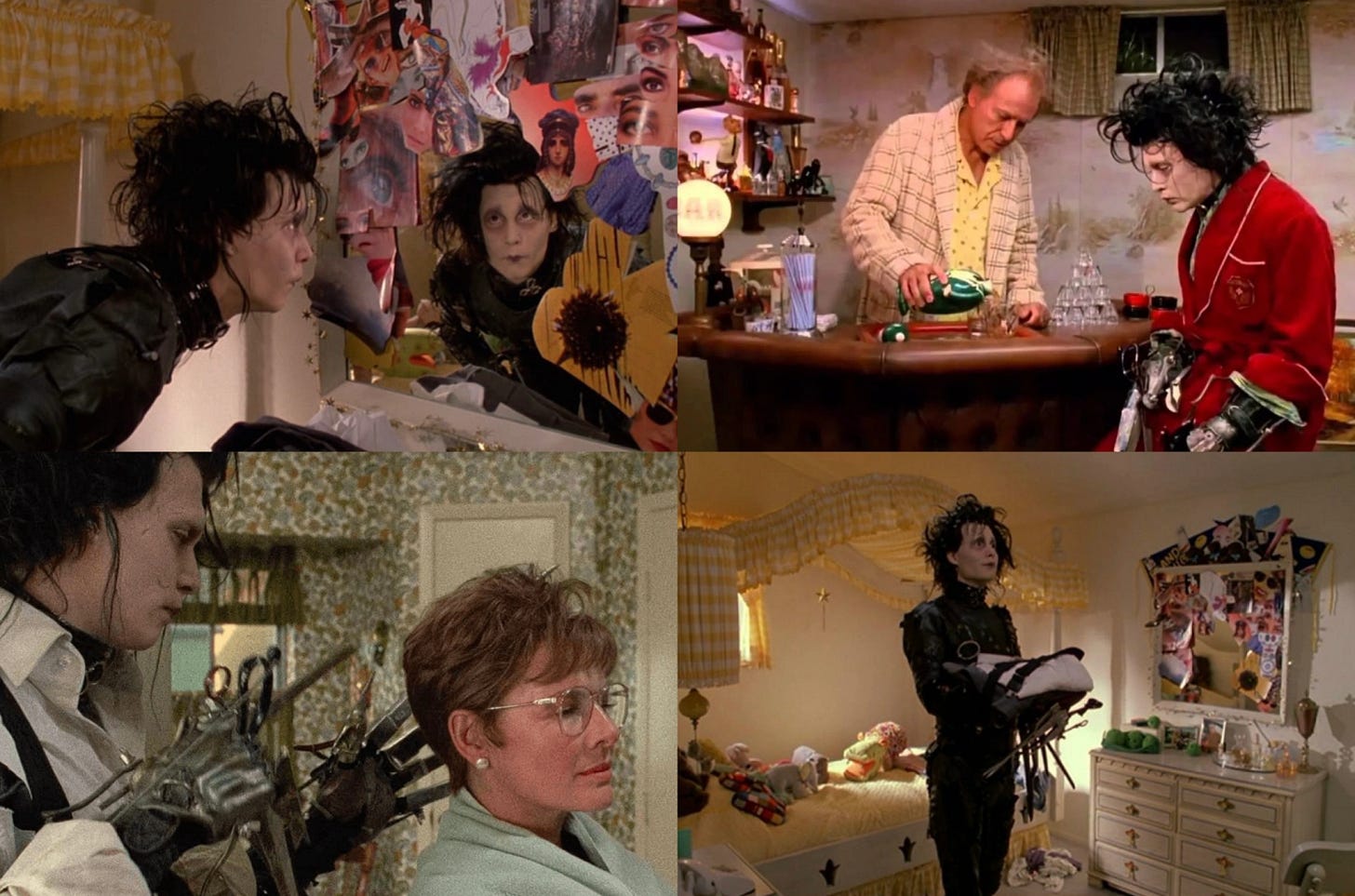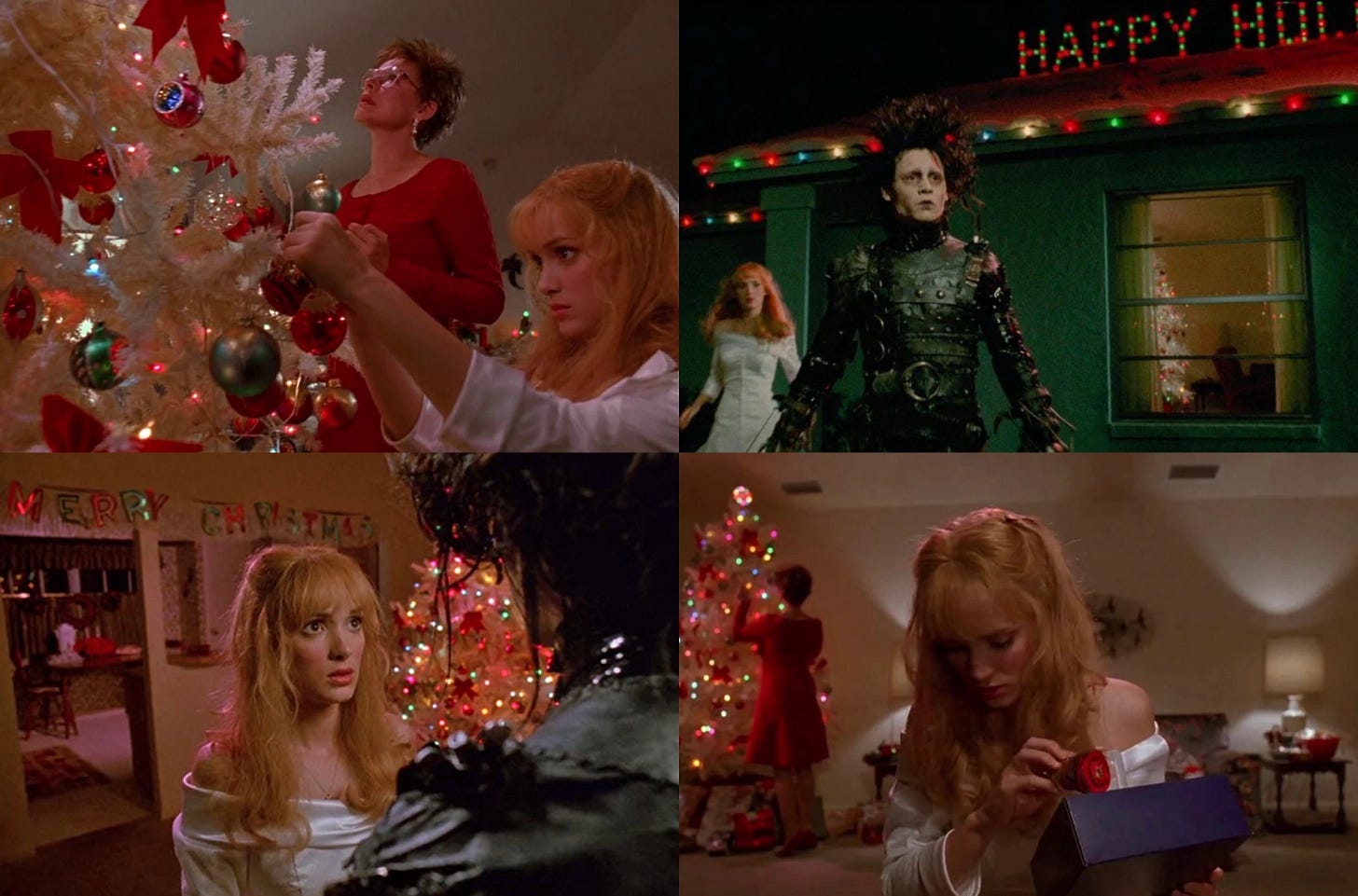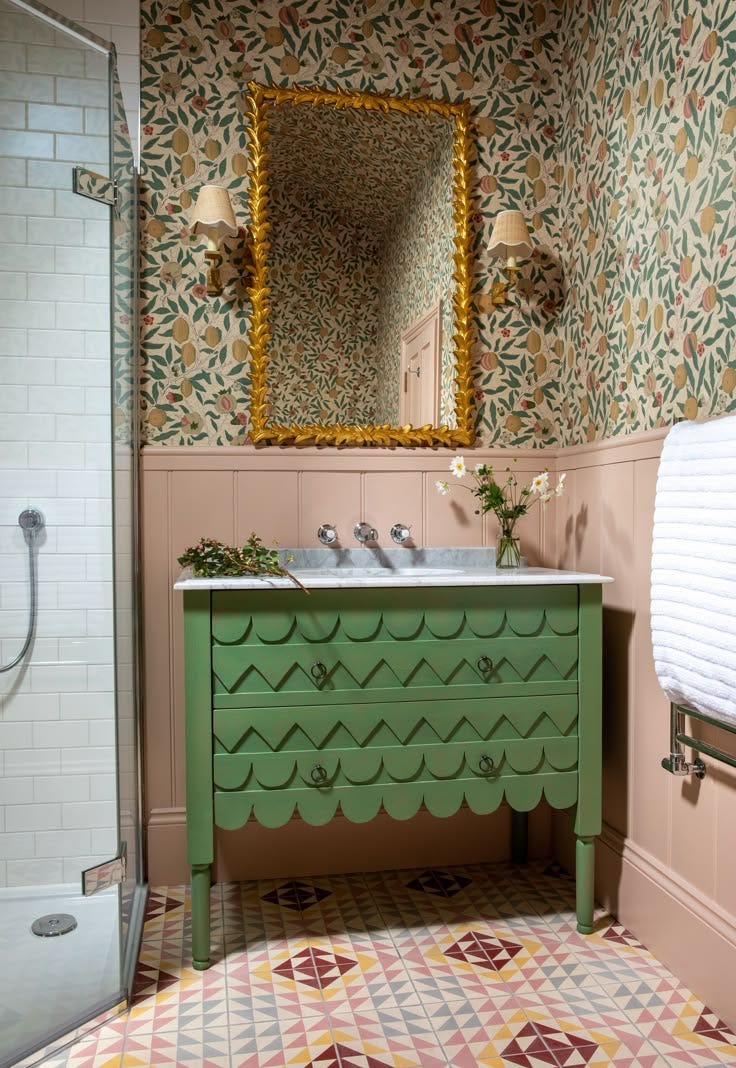Focus: The Interior Design and Christmas Décor in Edward Scissorhands
Tim Burton’s Edward Scissorhands (1990) is one of my most favourite films to watch at Christmas time. A visually striking film, memorable not only for a hauntingly beautiful storyline but also for the distinct, dreamlike aesthetics. The suburban neighbourhood in the film, with pastel-coloured homes and whimsical landscapes, provides a sharp contrast to the gothic, otherworldly feel of Edward’s mansion, and I have always been so intrigued by the mid-century inspired interior design and surreal décor created by the filmmakers.
Through the film’s unique set design and décor, Burton creates a visual narrative that underscores the film’s themes of isolation, conformity, and human emotion. In particular, the interior design of the various houses and the magical Christmas decorations add depth and charm to the story, contributing to its enduring cultural significance.
SUBURBAN PASTELS: A CONTRAST OF WORLDS
The primary setting of Edward Scissorhands is a typical suburban neighbourhood, a caricature of 1950s and 1960s American suburbia, with rows of nearly identical houses, all painted in soft pastel shades like pink, blue, yellow, and green. The uniformity of these exteriors’ hints at the conformity of the neighbourhood’s residents, who live predictable, orderly lives. Each home’s interior reflects the personality of the owner, yet all share a certain kitsch, suburban cheerfulness. These homes provide a stark contrast to Edward’s gothic mansion, perched ominously on a hill above the town.
THE BOGGS’ WORLD
Peg Boggs, who brings Edward into her home, lives in a house decorated with a mix of vintage and mid-century modern design elements. Her house is light, colourful, and filled with everyday domestic objects that exude warmth and family life. The living room is decorated with floral-print furniture, pastel curtains, and decorative plates on the walls. This kind of “fifties nostalgia” vibe is evident in the way the set designers used overly cheerful and organised decorations to convey a sense of idealised suburban life (also special mention to Winona Ryder’s character Kim Boggs and her girly bedroom with the iconic waterbed).
The Boggs’ dining room features wallpaper in soft, pastel colours with retro motifs, and their kitchen boasts an array of mint-green cabinets with chrome finishes, a nod to postwar American design trends. The space is uncluttered, functional, and designed for convenience—everything Edward is not. These elements enhance the feeling that Edward, with his dark, avant-garde look, doesn’t quite fit in this carefully curated, controlled environment.
EDWARD’S MANSION: GOTHIC ELEGANCE
In contrast to the uniformity of the suburb, Edward’s mansion represents a world of mystery and gothic fantasy. The interior of his home is a decaying grandeur, marked by dark colours, elaborate yet broken furniture, and shadowy, gothic architecture. Large, jagged windows let in slivers of light, casting eerie shadows across rooms filled with cobweb-covered chandeliers and antique furniture that has seen better days.
The mansion’s colour palette is muted, with dark shades of grey, black, and brown, evoking a sense of melancholy and isolation. The grand hallways and high, vaulted ceilings give the impression that this house, once glorious, has been long forgotten, much like Edward himself. In Edward’s bedroom, we see large, dusty mirrors and gothic art pieces, reminiscent of something out of a gothic fairytale.
The mansion’s interior reflects Edward’s isolation from the outside world, yet it also speaks to his artistic, sensitive nature. Despite a decayed state, the mansion holds remnants of beauty, a testament to Edward’s creativity, seen most explicitly through his elaborate topiary sculptures that decorate the mansion’s exterior.
CHRISTMAS IN Edward Scissorhands
One of the most iconic scenes in Edward Scissorhands takes place during Christmas, a holiday that highlights both the magic and melancholy of Edward’s story. Burton uses the holiday season to symbolise warmth and joy in the suburban neighbourhood, while also emphasising Edward’s loneliness and inability to fully participate in the community’s celebrations.
The Boggs’ house is decked out in festive Christmas decorations, bringing a nostalgic charm to their already vibrant home. I am obsessed with the strings of multi-coloured Christmas lights that adorn the roof, and traditional decorations like tinsel, baubles, and wreaths which all add an American style ‘holiday’ touch to the pastel interior. The family Christmas tree, with colourful lights and handmade ornaments, stands at the centre of their holiday celebrations, evoking a sense of homely warmth and togetherness.
SNOW AND ICE SCULPTURES
A significant element of the film’s Christmas theme is Edward’s creation of ice sculptures, which transform the neighbourhood into a winter wonderland. Edward uses his scissor hands to carve elaborate, magical ice sculptures, showering the town in snowflakes. This sequence, set against Danny Elfman’s enchanting score, is one of the film’s most beautiful moments, highlighting Edward’s artistic nature. The snow he creates, falling gently over the suburban homes, contrasts with the artificial cheer of the Christmas lights and decorations, adding an ethereal, almost otherworldly beauty to the setting. The juxtaposition of this beauty with the brightly coloured, cheery Christmas decorations of the Boggs’ home highlights the underlying sadness in Edward’s story.
EDWARD SCISSORHANDS INSPIRED MODERN INTERIORS
















